Review: Strong Feet Athletics Leviathan Cycling Shoes – A Triathlete’s Relief for Plantar Fasciitis
 Karen Parnell
July 07, 2025
Karen Parnell
July 07, 2025
Review: Strong Feet Athletics Leviathan Cycling Shoes – A Triathlete’s Relief for Plantar Fasciitis
If you're anything like me, you've probably spent a lot of time finding the right running shoes – especially if you’ve ever battled plantar fasciitis.
That sharp, burning pain first thing in the morning or mid-ride sting can really derail your training, let alone your race plans.
So, switching to wide toe box running shoes was a game-changer for me. My feet could finally breathe, my toes weren’t being crammed into unnatural positions, and my plantar fasciitis started to ease.
But there was a problem – every time I hopped on the bike, my cycling shoes undid all that progress. Most road cycling shoes are designed with a narrow, performance-first fit that simply doesn’t suit every foot – and definitely not a foot that's recovering from injury.
That’s what led me to try the Strong Feet Athletics Leviathan cycling shoes. I was hunting for a wide toe box option that didn’t look or feel like a compromise. What I found was a shoe that not only kept my feet happy but brought some unexpected triathlon-friendly perks too.
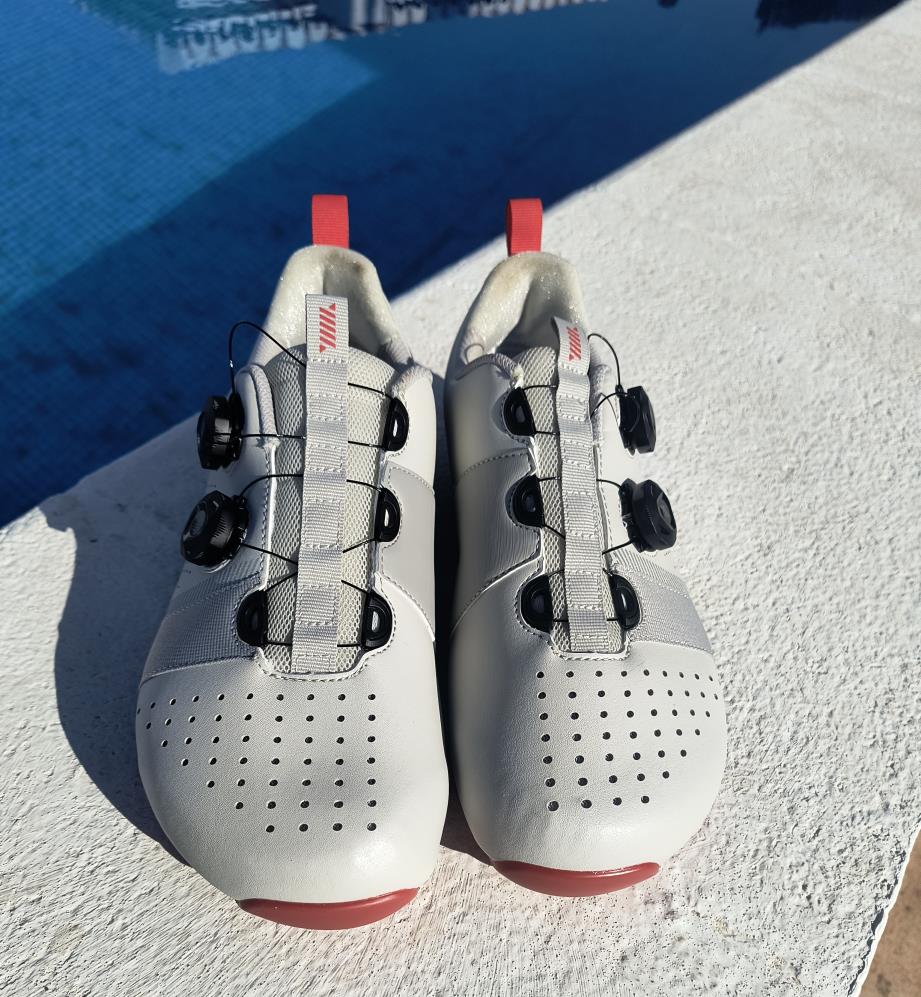
Leviathan Cycling Shoe with Wide Toe Box
Get your FREE 31 structured indoor cycling sessions and training plan
Why Wide Toe Box Cycling Shoes?
The toe box might seem like a minor detail, but it’s critical. A wide toe box lets your forefoot and toes spread naturally – which reduces pressure, improves blood flow, and minimizes nerve compression.
This is huge if you’re dealing with plantar fasciitis or other foot-related issues. Most traditional cycling shoes force your foot into a tapered front end, cramping your toes together. Over time (or distance), that means discomfort, hotspots, or in my case – a flare-up of plantar pain.
Specialised wide toe box shoes (e.g. Altra for running or Leviathan cycling) are not to be confused with wider fit options of standard shoes as these still have a thinner to box which compresses your toes together. If you want your toes in their natural position then seek out natural fit, wide to box or barefoot shoes.
A strong body requires strong feet. Strong feet must have space to spread your toes for optimal force production, agility power and balance.
With the Leviathans, I noticed almost immediately how much more relaxed my feet felt. There was no tingling, no tight squeeze, and no pain after longer rides.
When I got out of the saddle and pedal for climbs there was a good amount of cushioning under foot which helped to stay up longer and apply power through my foot.
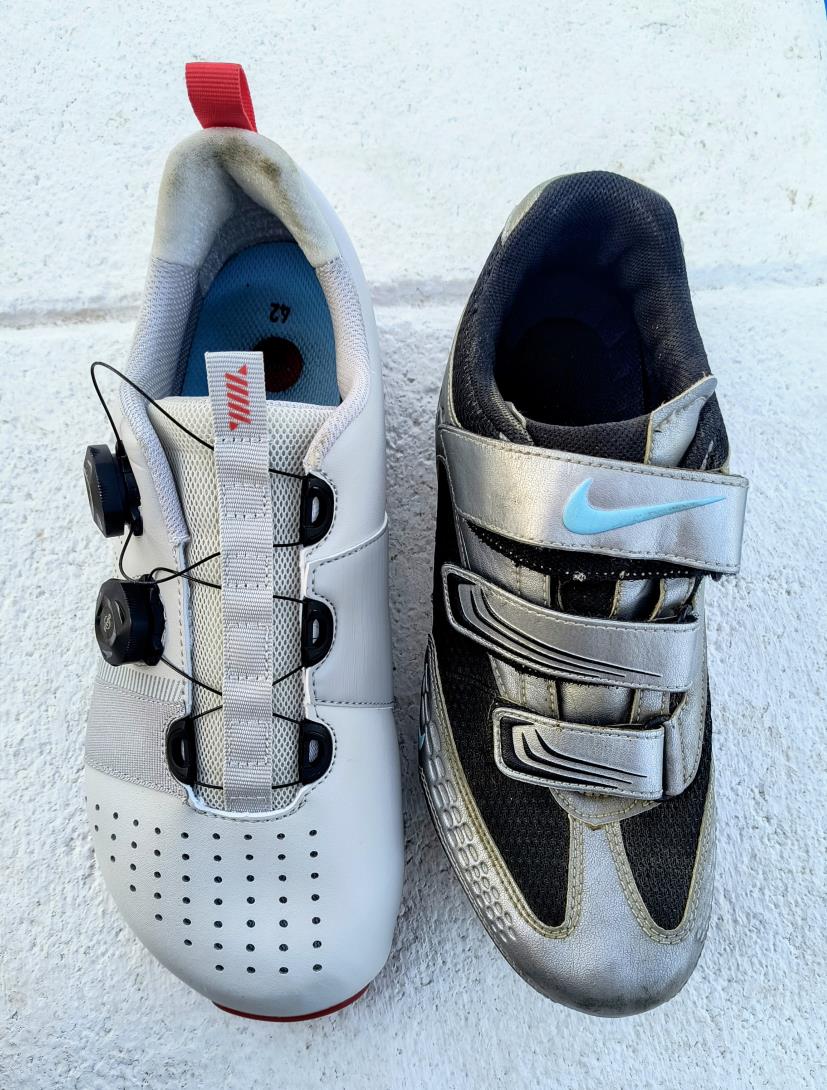
Comparison of the Leviathan Wide Toe Box and my Standard Cycling Shoes Narrow Toe Box
Get your FREE ChiliTri Mobility Challenge
Leviathan Cycling Shoe Product Info: What You Need to Know
- Website & PriceThe Leviathan cycling shoes are available directly from Strong Feet Athletics for $299 per pair, with free USA shipping and sizing exchanges. They ship internationally via GlobalPost, though import duties may apply.
- Website: strongfeetathletics.com
- Physical Stats
- Sole: Single-piece unidirectional carbon fibre, zero-drop, flat from heel to toe
- Cleat Compatibility: Standard steel cleat nuts fit SPD, SPD‑SL, Look-type 3‑bolt, and Delta 3‑bolt systems—flexible across road, MTB, gravel, and commuter pedals
- Upper: Microfiber (synthetic leather) with mesh lining; no animal products
- Walking Pads: TPU to improve traction off the bike
- Closure System: FitGo rotary dials with lace keepers for quick, secure fit—perfect for transitions
- Sizing: Available in EU 38–48; sizes are foot-length-based, so be sure to measure in mm or inches
- Weight Estimate: Around 400–600 g per shoe—heavier than featherweight race models but lighter than MTB/touring variants.
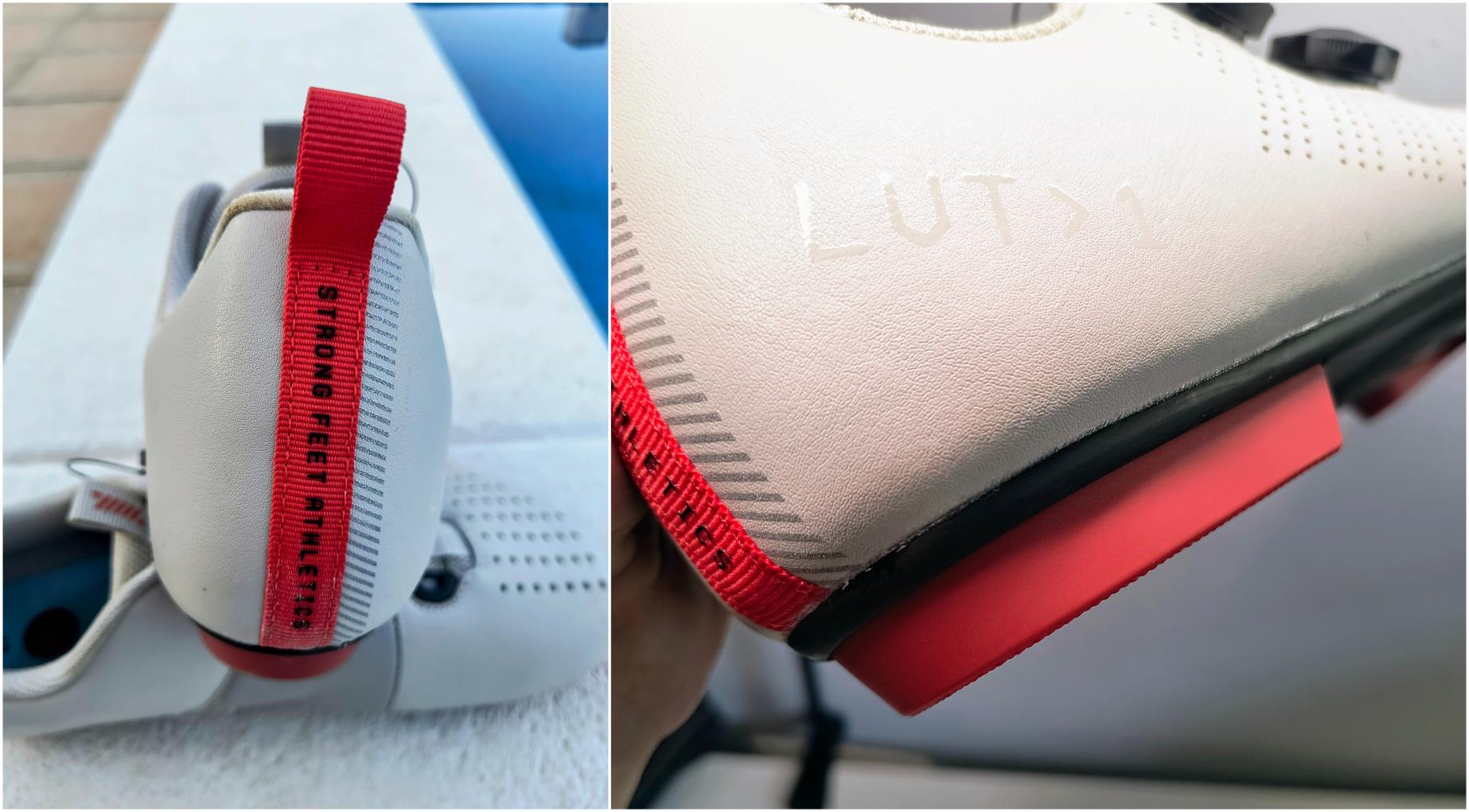
Leviathan Cycling Shoes have great detailing
Get your FREE 31 structured indoor cycling sessions and training plan
What’s Inside the Box
When you unbox the Leviathans, you get:
- The Leviathan shoes (with FitGo dial system and lace keepers).
- Removable TPU walking pads pre-installed on the sole.
- Cleat hardware: Steel components compatible with 2-bolt and 3-bolt setups.
- Cloth overshoes: These will keep your toes and feet warm in colder conditions.
- Shoe bag: A black and red shoe bag to hold your shoes and overshoes when not riding.
Below is the Leviathan unboxing video to show you every detail as it unfolds—so you can inspect everything firsthand.
Unboxing of the Strong Feet Athletics Leviathan Cycling Shoes
Get your FREE 31 structured indoor cycling sessions and training plan
First Impressions of Leviathan
As you can see in the unboxing video you can get a good look at the shoe's unique design – and yeah, it does look different from your standard carbon race slipper.
The upper is modern and clean with a distinctive silhouette that’s clearly built for function over form, though I actually kind of like the bold look. Plus, they are exceedingly comfortable – even without socks!
What really stood out:
- Wide Toe Box = Real Comfort + Power: This was a game-changer. The toe box is genuinely wide – not just "wider than average," but truly foot-shaped. You can feel your toes spread naturally, just like they do in barefoot or wide running shoes. This makes a huge difference for comfort, especially on longer rides or if you're recovering from something like plantar fasciitis. More importantly, I noticed improved stability when pedalling, especially during climbs or big gear efforts. With a solid platform and no cramping in the forefoot, you feel more connected and can drive power more efficiently. It's like lifting weights barefoot – more natural, more grounded.
- Closure system: They tighten down securely with a FitGo BOA-style dial and strap combo that feels intuitive and fast – ideal for triathlon transitions. No fussing with Velcro straps. Just twist to tighten and one click in the opposite direction to release.
- Walkability: Unlike most road shoes, these are genuinely easy to walk in. The sole design gives you just enough grip and flex for stable footing in transition zones or quick pit stops.
- Compatibility:I tested them with both Look Keo cleats and Magped pedals – both worked flawlessly. The cleat mounts are well-placed and didn’t require any odd shimming or repositioning.
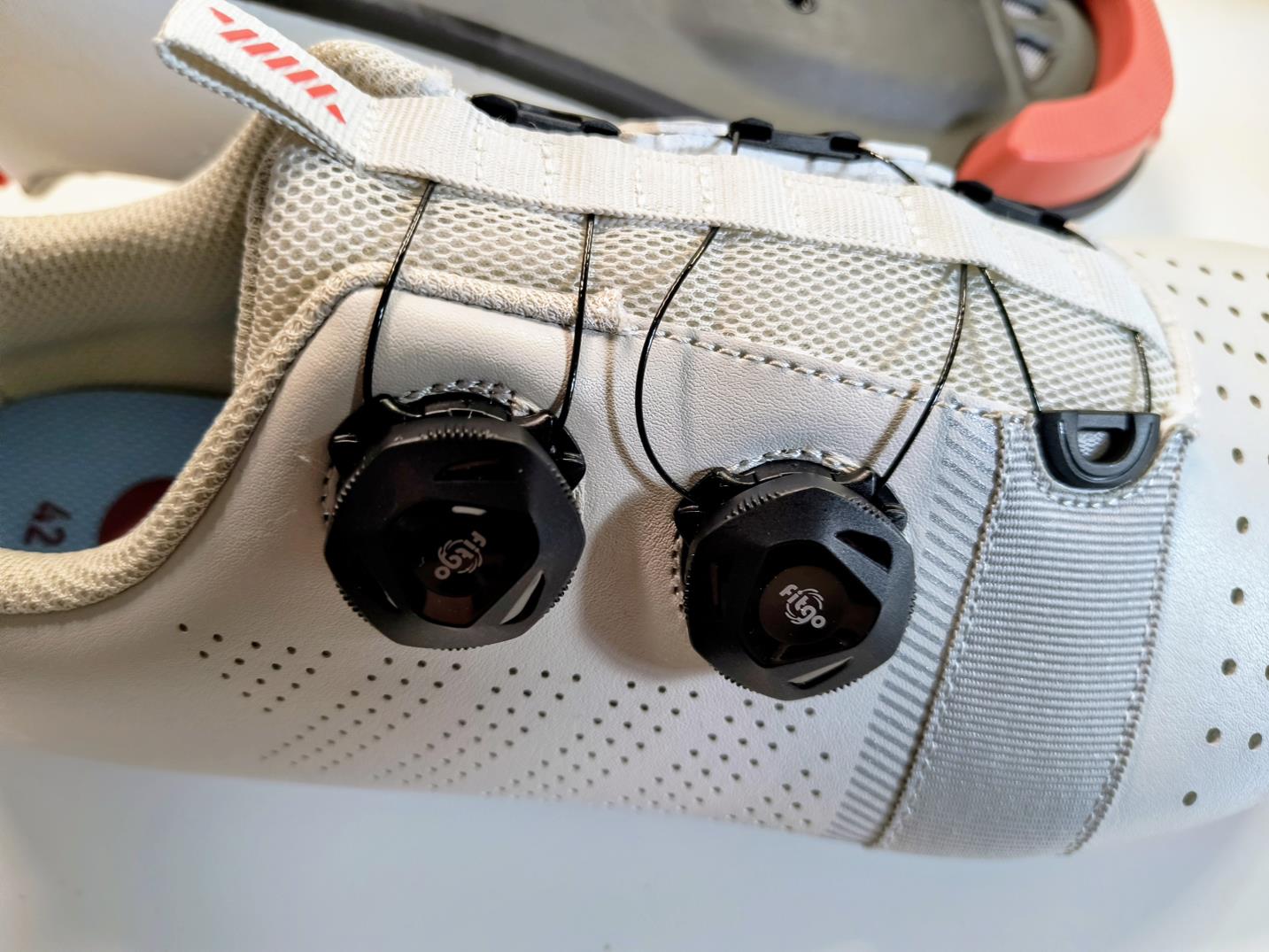
Leviathan Cycling Shooe Fitgo Closure System
Get your FREE Guide to Strength and Conditioning for Triathletes
Weight Comparison: Heavier Than Average – But Worth It?
Now, let’s talk weight. If you’re used to ultra-light road shoes in the 220–300 g per shoe range, the Leviathans will feel a bit heavier. Based on their build and materials, they likely fall somewhere between 400–600 g per shoe. That puts them on par with most standard road shoes (typically around 350–450 g per shoe), and lighter than more rugged MTB or touring shoes (which can weigh over 600 g per shoe).
Is that extra weight noticeable? Not really on the bike – and certainly not when weighed against the comfort and foot health benefits. Unless you’re trying to shave seconds off a TT or podium at Kona, this trade-off is more than fair. For me, keeping my plantar fasciitis at bay is worth a few extra grams.
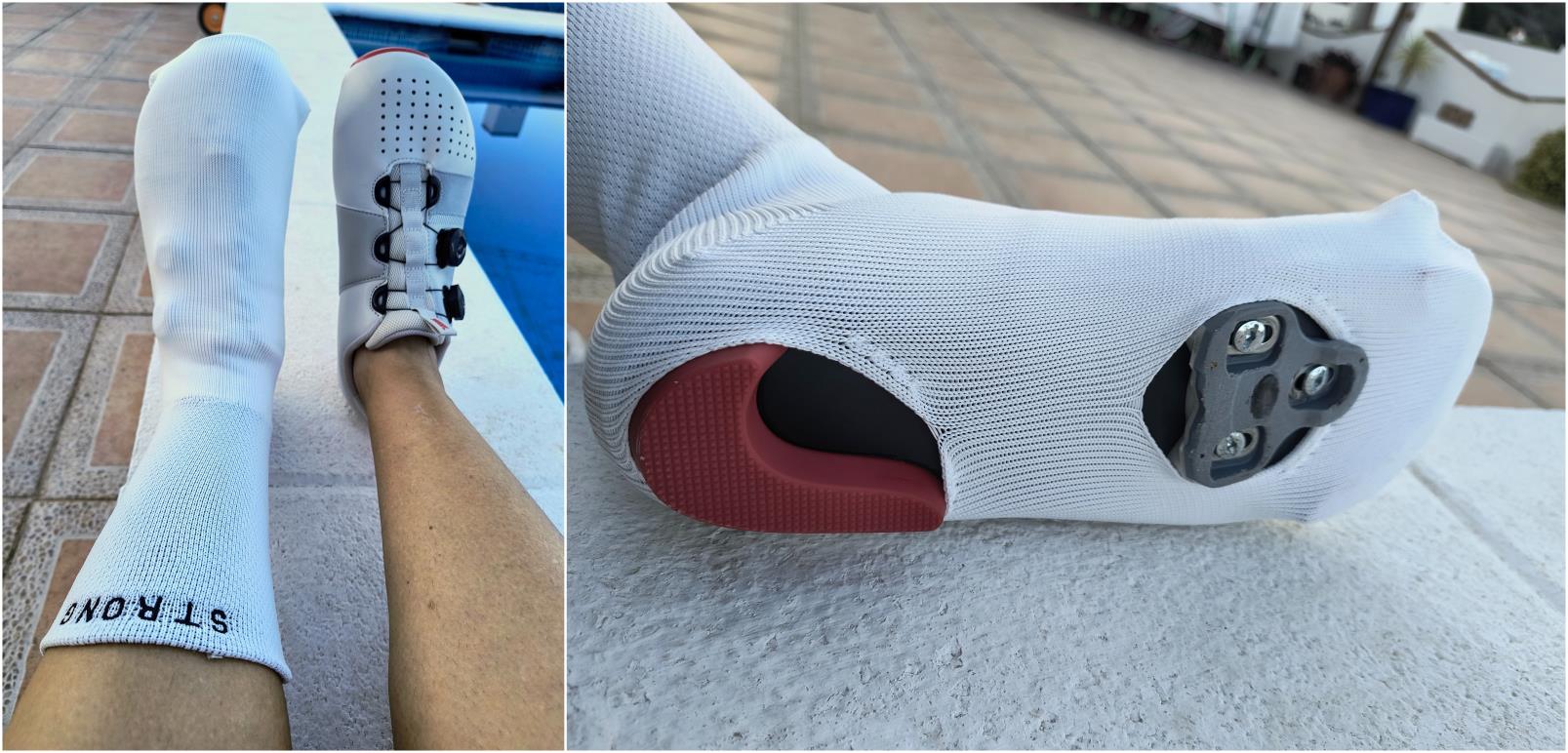
Leviathan Cycling Overshoes - a nice touch and will keep your feet warm on colder days
Get your FREE 31 structured indoor cycling sessions and training plan
Leviathan Shoes Fit & Function
Getting the right fit was one of my biggest concerns going in—especially since I have one foot a whole size larger than the other (which is more common than you’d think). I reached out to Strong Feet Athletics' support team, and they were super helpful. They recommended going with the size that fits my larger foot, and I’m glad I listened. The shoes fit really well, with no pressure points and enough room up front where it matters most.
The closure system deserves a mention here too. The dual-dial setup lets you fine-tune the tension across different parts of the foot, which helped me get a snug, locked-in feel without over-tightening. Whether you’re heading out for a long training ride or racking up T2 in a triathlon, they feel secure and stable every time.
The insole was a surprise—it’s thicker and more cushioned than what I’m used to in most cycling shoes. Honestly, it adds a lot to the overall comfort, especially if you're sensitive underfoot or prone to plantar issues like I am.
Finally, these shoes are impressively easy to walk in. They’re not clunky like my other road shoes, which I really noticed during transitions and coffee stops. The sole design adds just enough grip and flex for confident walking without compromising on stiffness while riding.
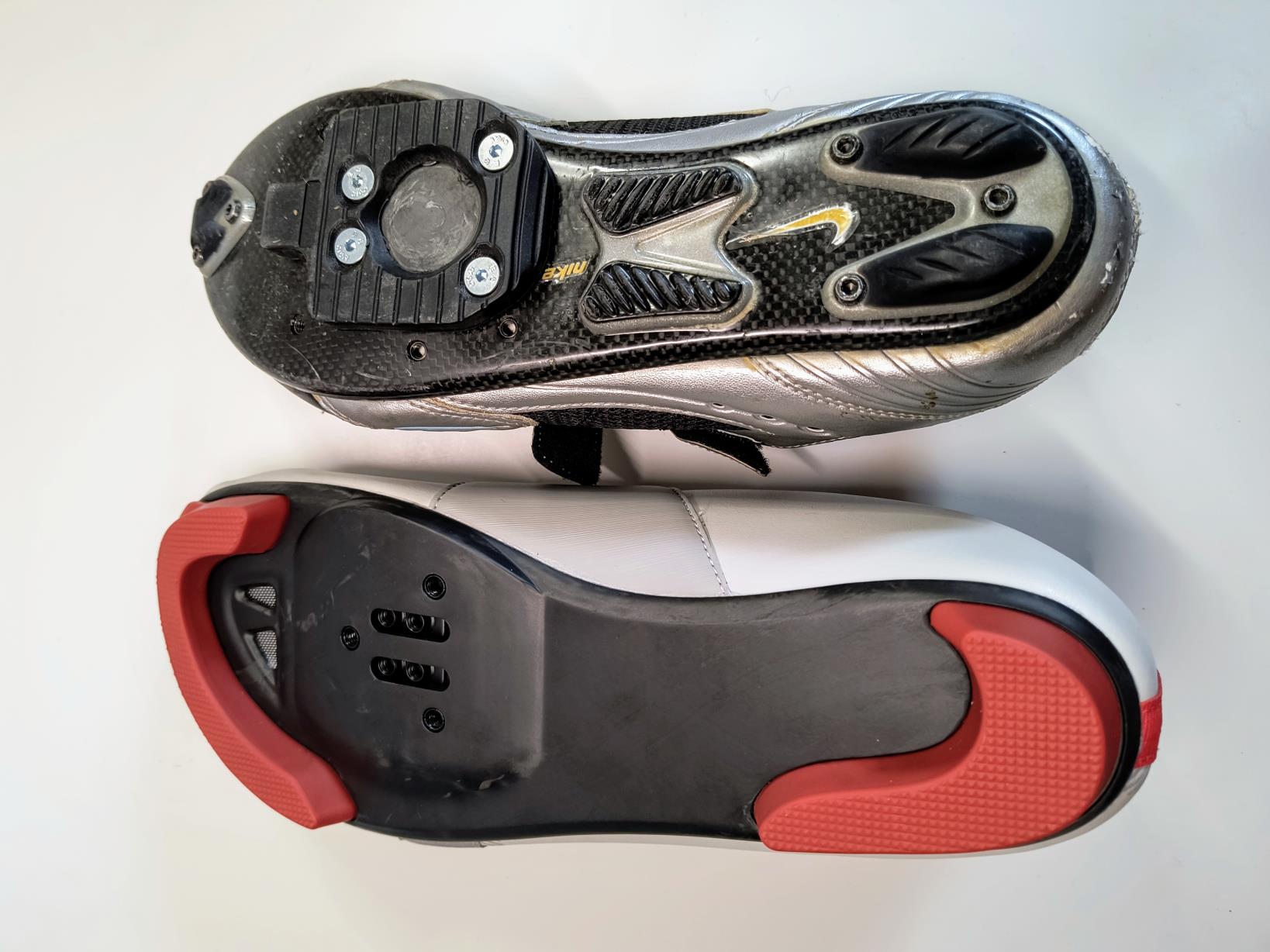
Leviathan Shoe Sole which is Easy to Walk in
Pros and Cons of the Leviathan Cycling Shoes
After plenty of testing in training rides and triathlon-specific scenarios, here’s a breakdown of the key pros and cons. These should help you decide if the Leviathans are the right fit for your feet, your riding style, and your racing goals.
Pros
✅Wide toe box – The real hero here. Truly foot-shaped and natural-feeling.
✅Comfortable to ride in – Even on longer rides, no hotspots or pressure points.
✅Triathlon-friendly closure – Quick and secure tightening, great for transitions.
✅Walkable sole – Feels more like an SPD hybrid shoe in terms of traction.
✅Versatile cleat compatibility – Worked seamlessly with both Keo and Magped setups.
Cons
⚠️A bit on the heavy side – Compared to top-tier carbon road shoes, they’re not featherweights. Not ideal if you’re obsessed with grams, but totally reasonable for most triathletes.
⚠️Looks may divide opinion – These shoes don’t try to blend in. If you're after classic sleek race styling, these might not be your vibe.
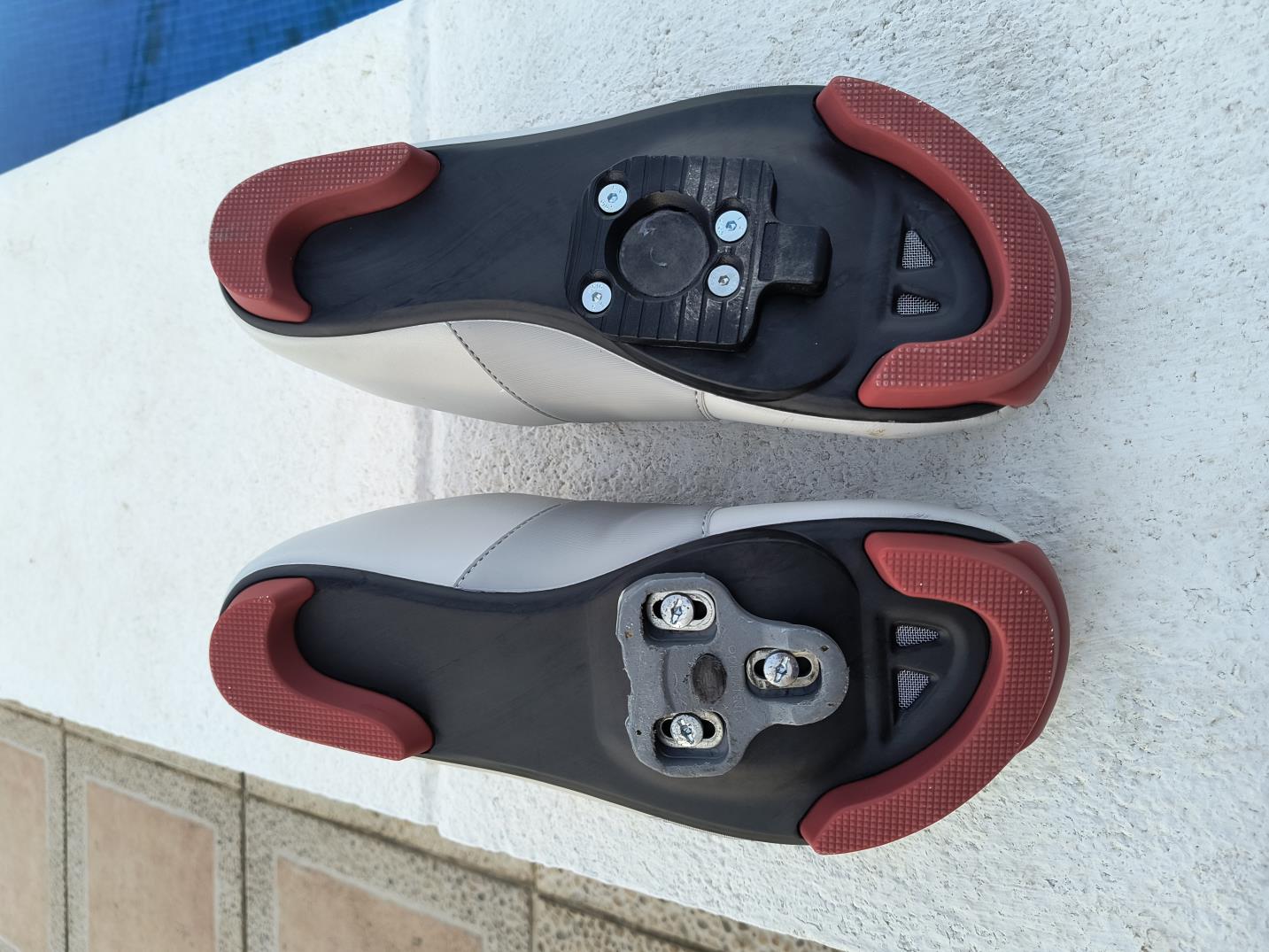
Leviathan Cycling Shoes with Keo Look and Magpad Cleats - plus you can see Walking Pads
Get your FREE Swim Workouts for Triathletes E-book
Conclusion and Final Thoughts
If you’re recovering from foot issues like plantar fasciitis – or just tired of cramming your feet into narrow cycling shoes – the Strong Feet Athletics Leviathans are absolutely worth a look. They offer real relief, real comfort, and performance that holds up in training and racing alike.
While they might not win any style awards or weight battles, they more than make up for it with practicality, comfort, and smart triathlon features.
Yes, they’re a little heavier. But for me – and likely for anyone trying to ride pain-free – the comfort and smart design far outweigh any downside. Honestly, these are the first cycling shoes that didn’t make me dread the run after the ride.
As someone who’s coaching athletes to balance injury prevention with performance, I genuinely think these shoes fill a much-needed gap in the market. And honestly? My feet have never felt better on the bike.
Karen Parnell is a Level 3 British Triathlon and IRONMAN Certified Coach, 8020 Endurance Certified Coach, WOWSA Level 3 open water swimming coach and NASM Personal Trainer and Sports Technology Writer.
Karen has recently completed a postgraduate MSc in Sports Performance Coaching at the University of Stirling.
Need a training plan? I have plans on TrainingPeaks and FinalSurge:
I also coach a very small number of athletes one to one for all triathlon and multi-sport distances, open water swimming events and running races, email me for details and availability. Karen.parnell@chilitri.com
Get your FREE Guide to Running Speed and Technique
Get your FREE Swim Workouts for Triathletes E-book
Get your FREE Open Water Swimming Sessions E-Book
FAQ – Strong Feet Athletics Leviathan Cycling Shoes
1. Are these shoes good for plantar fasciitis?
Yes – this is one of the main reasons I tried them. The wide toe box allows your toes to splay naturally, reducing pressure and strain on the plantar fascia. Traditional narrow cycling shoes can aggravate plantar fasciitis by compressing the forefoot and altering foot mechanics. These feel much more natural and supportive.
2. Do the Leviathans really have a wide toe box?
They do – truly. Not “wide-ish oe wide fit” like some brands claim. The shape is more anatomical, giving your forefoot room to spread. If you’ve been using wide toe box running shoes (like Altra or Topo), these will feel much closer in shape than typical road shoes.
3. Are they heavy?
They’re heavier than super-light racing shoes, but not excessively so. Most riders won’t notice the weight on the bike. The added structure is part of what makes them comfortable and durable. If you're not chasing every last gram for racing, the trade-off is well worth it.
4. Can I use them with my current pedals?
Yes – I tested them with Look Keo cleats and Magped pedals, and both worked great. The cleat mount is standard 3-bolt, so they should work with most road pedal systems. Always check compatibility, but they’re designed to be versatile.
5. Are they good for triathlon transitions?
Surprisingly, yes! The quick-tightening dial and strap system makes them easy to get on and off. They're not quite “barefoot-quick,” but definitely faster than laces or multi-strap velcro setups. The sole is grippy enough to walk or jog through transition without slipping.
6. How is walkability off the bike?
One of the best features. These are much easier to walk in than most road shoes. The sole has a bit more grip and flex than traditional full-carbon plates, which makes navigating transition zones, pit stops, or coffee shops more natural and less “clunky.”
7. How do they compare to traditional road cycling shoes?
- Fit: Much wider, especially in the toe box.
- Comfort: Higher, particularly for long rides or sensitive feet.
- Weight: Slightly heavier than racing shoes, but not by much.
- Style: More functional and modern-looking – not your sleek Italian silhouette.
- Versatility: Great for road, triathlon, and casual training.
8. Are they worth the money?
If you’re struggling with foot pain, wide feet, or want a more natural fit – absolutely. They’re not the cheapest shoes on the market, but considering the comfort and foot health benefits, they’re a smart long-term investment in pain-free riding and racing.
9. Do they come in different widths or sizes?
They’re designed as naturally wide shoes, so even the standard size accommodates broader feet. That said, always check the sizing chart – I found they fit true to size, with a little more room in the forefoot (as intended). I have one foot that is one size bigger than the other and they fit perfectly.
10. Would you recommend them to other triathletes?
Yes – especially those prone to foot pain, cramping, or transitioning from minimal/wide running shoes. They’re comfortable, stable, and transition-friendly. Maybe not for the Kona podium chasers, but for the vast majority of age-groupers, they’re a fantastic option.
